Potting Bench Bliss: DIY Dreams
Potting Bench Bliss: DIY Dreams
For the passionate gardener, the potting bench is more than just a piece of furniture; it's a sanctuary, a workshop, a creative hub where the magic of gardening unfolds. It’s a place to nurture seedlings, repot overgrown plants, and organize gardening tools, all within a dedicated and aesthetically pleasing space. While pre-made potting benches are readily available, the true joy lies in the DIY experience. Building your own potting bench allows for personalized design, material selection, and the immense satisfaction of creating something beautiful and functional with your own hands. This comprehensive guide will take you through the journey of designing, building, and customizing your dream potting bench.
Part 1: Designing Your Dream Potting Bench
Before you even pick up a saw, careful planning is paramount. Consider these key factors to ensure your potting bench is perfectly suited to your needs and space:
1. Size and Dimensions: The dimensions of your potting bench will be determined by the available space in your garden or yard, as well as the scale of your gardening projects. A small, compact bench might suffice for a balcony garden, while a larger, more elaborate structure is ideal for a spacious backyard. Consider the size of your largest pots and the amount of supplies you need to store. Sketch out a few potential designs, noting the exact measurements for each component. Don't forget to account for adequate workspace and legroom.
2. Material Selection: The choice of materials significantly impacts the durability, aesthetic appeal, and overall cost of your potting bench. Popular options include:
-
Wood: A classic and versatile choice, wood offers warmth, natural beauty, and relative ease of working with. Cedar and redwood are naturally resistant to rot and insects, making them excellent choices for outdoor benches. Pressure-treated lumber is a more budget-friendly option but requires proper sealing to extend its lifespan.
-
Metal: Metal, particularly galvanized steel or aluminum, offers exceptional durability and weather resistance. Metal benches are generally more expensive than wooden ones but require less maintenance. Consider the weight and potential for rusting when choosing metal.
-
Concrete: Concrete provides ultimate durability and weather resistance, but it's significantly heavier and more challenging to work with than wood or metal. Concrete benches are best suited for permanent installations and require specialized tools and expertise.
-
Combination Materials: You can achieve unique designs and optimize durability by combining materials. For instance, a metal frame with a wooden countertop offers the best of both worlds.
3. Features and Functionality: Think carefully about the features that will enhance the functionality of your potting bench. Some popular additions include:
-
Drawers and Cabinets: Integrated storage solutions are essential for keeping gardening tools, seeds, and fertilizers organized. Consider the size and number of drawers or cabinets based on your storage needs.
-
Countertop: The countertop should be spacious enough for comfortable working and durable enough to withstand the wear and tear of daily gardening tasks. Consider using a material that is easy to clean and resistant to water damage.
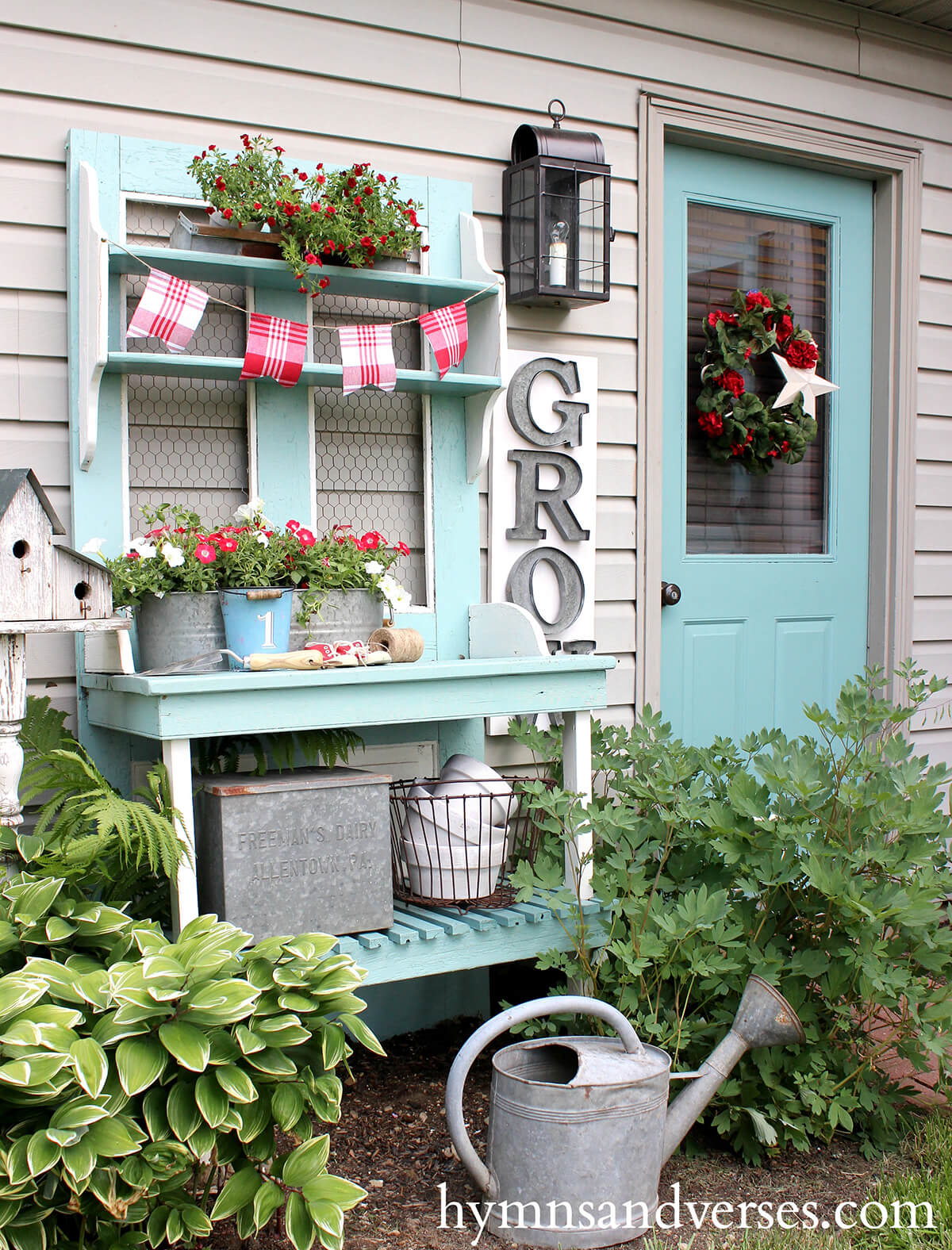
-
Shelving: Open shelving provides convenient access to frequently used items and adds visual appeal. Consider adding adjustable shelving to maximize flexibility.
-
Built-in Hooks: Hanging hooks are ideal for storing tools such as trowels, hand rakes, and watering cans.
-
Wheels: If you need to move your potting bench frequently, consider adding wheels to the base for easy mobility.

4. Style and Aesthetics: Your potting bench should complement the overall style of your garden and home. Consider the existing colors and materials in your outdoor space when choosing the materials and design for your bench. A rustic design might suit a cottage garden, while a modern minimalist design might be more appropriate for a contemporary landscape.
Part 2: Building Your Potting Bench - A Step-by-Step Guide
This section will provide a general guide for building a basic wooden potting bench. Adaptations can be made based on your chosen materials and design. Remember to always prioritize safety and use appropriate safety equipment, such as safety glasses and gloves.

Materials (example for a simple wooden bench):
- Pressure-treated lumber (4x4 posts, 2x4s for framing, 1x6s for shelving and countertop)
- Wood screws
- Exterior wood glue
- Wood stain or sealant
- Measuring tape
- Level
- Saw (circular saw or hand saw)
- Drill
- Screwdriver bits
- Sandpaper
- Paintbrushes or rollers (if staining or painting)
Steps:
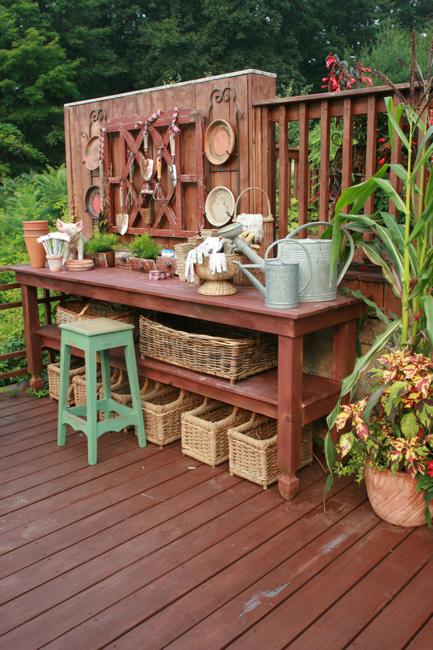
-
Prepare the Plans: Based on your chosen design and dimensions, create detailed plans with precise measurements for each component. This step is crucial for a successful build.
-
Cut the Lumber: Using your plans as a guide, carefully cut the lumber to the specified lengths. Ensure all cuts are square and accurate.
-
Assemble the Frame: Start by constructing the base frame using 4x4 posts and 2x4s. Use wood glue and screws to secure the joints. Ensure the frame is level and square.

-
Add the Shelves: Attach the shelves to the frame using wood glue and screws. Consider adding supports for heavier shelves to prevent sagging.
-
Install the Countertop: Attach the countertop to the frame using wood glue and screws. Ensure the countertop is securely fastened and level.
-
Add Finishing Touches: Once the structure is complete, sand all surfaces smooth. Apply wood stain or sealant to protect the wood from the elements and enhance its appearance. Add any additional features such as drawers, cabinets, or hooks.

- Final Inspection: Before using your new potting bench, perform a thorough inspection to ensure all components are securely fastened and the structure is stable and safe.
Part 3: Customizing Your Potting Bench
The beauty of a DIY potting bench is the opportunity for personalization. Here are some ideas to customize your bench and make it truly unique:

-
Incorporate Upcycled Materials: Give old pallets, reclaimed wood, or even repurposed metal pieces a new life by incorporating them into your potting bench design. This adds character and reduces waste.
-
Add a Built-in Watering System: Install a simple watering system with a reservoir and drip irrigation to automate the watering of your seedlings.
-
Create a Greenhouse Attachment: Attach a small greenhouse structure to your potting bench to provide a protected environment for starting seeds and delicate plants.
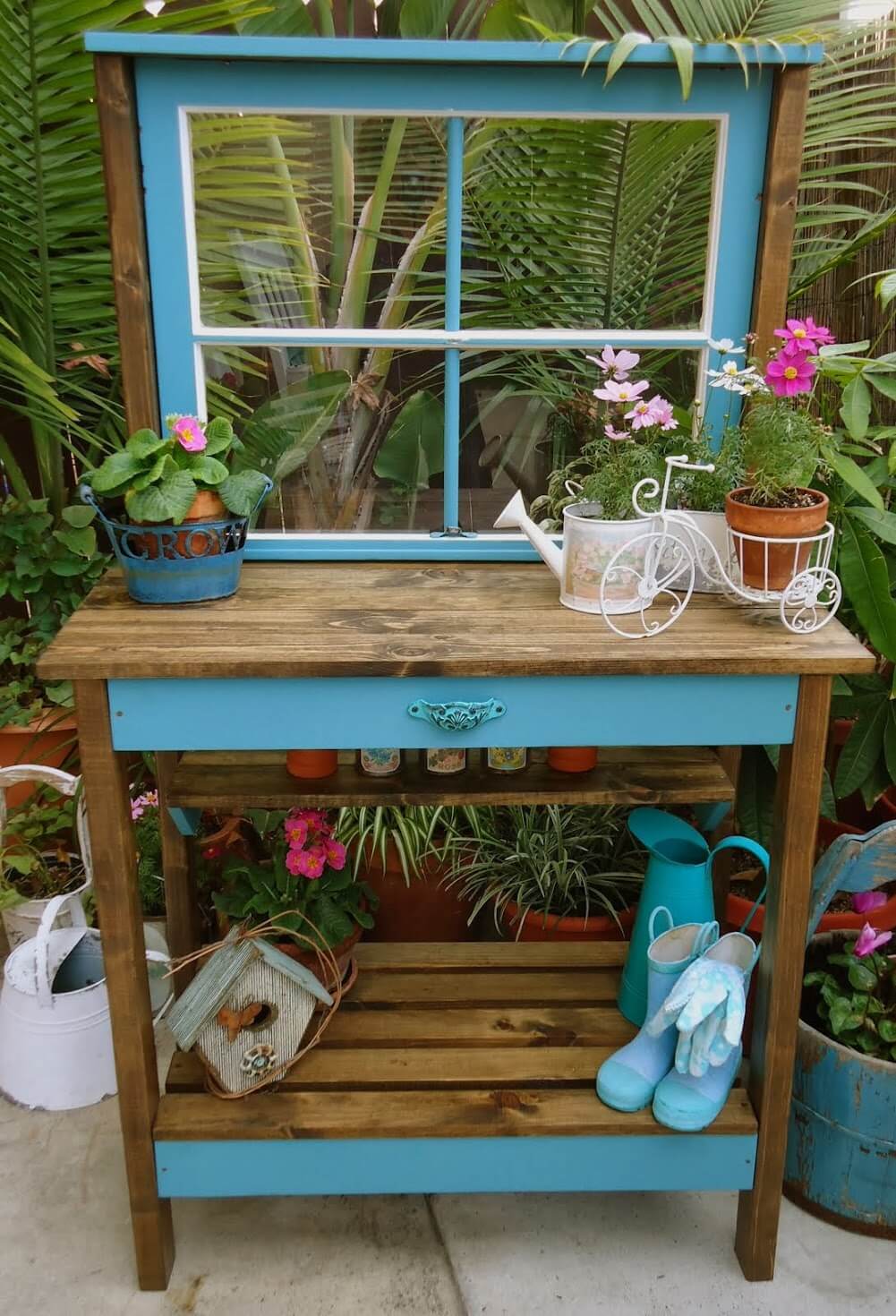
-
Add Lighting: Install LED strip lights underneath the countertop to provide ample illumination for evening gardening sessions.
-
Personalize with Paint or Stain: Choose colors and finishes that complement your garden’s aesthetic. Consider using stencils or freehand painting to add decorative elements.
-
Integrate Seating: Add a built-in bench or stool to create a comfortable workspace.
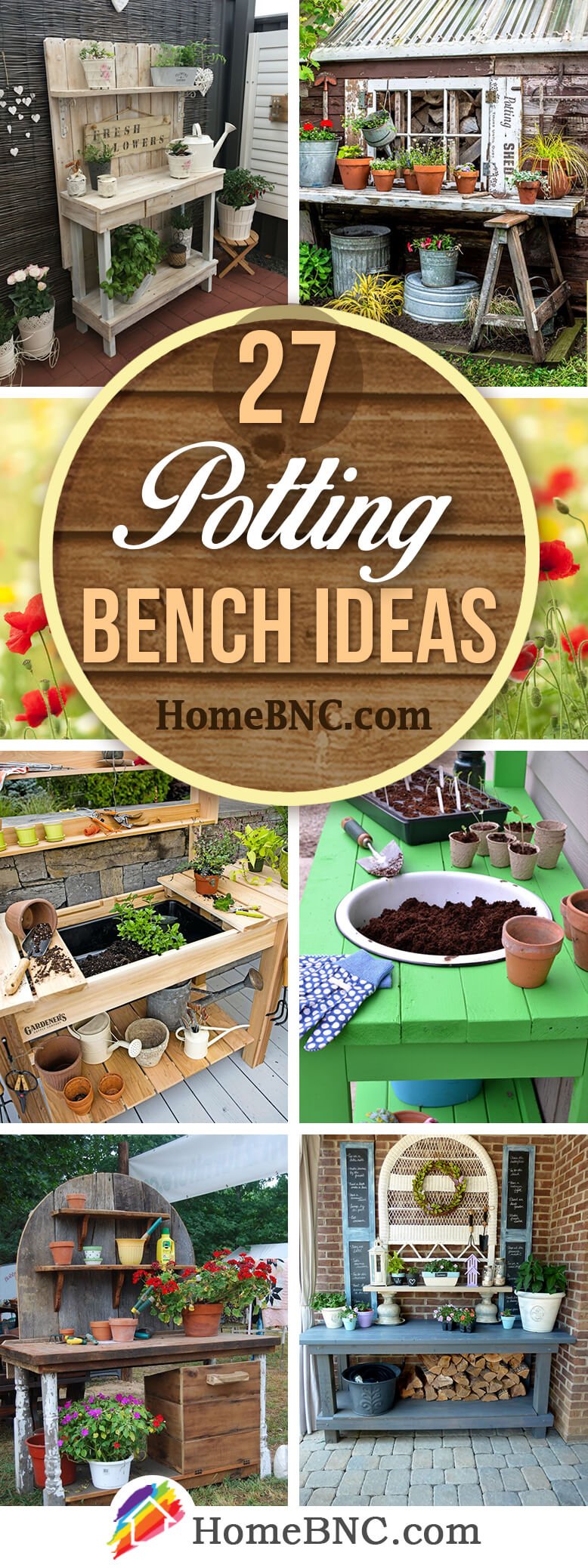
Part 4: Maintaining Your Potting Bench
Proper maintenance is essential to extend the lifespan of your potting bench. Regularly inspect your bench for any signs of damage, such as cracks, loose screws, or rust. Tighten loose screws, repair any cracks, and repaint or reseal the wood as needed. Clean your bench regularly to remove dirt, debris, and spills. Protect your bench from harsh weather conditions by covering it with a tarp or storing it in a sheltered area during severe storms or extended periods of inclement weather.
Conclusion: Embrace the DIY Journey
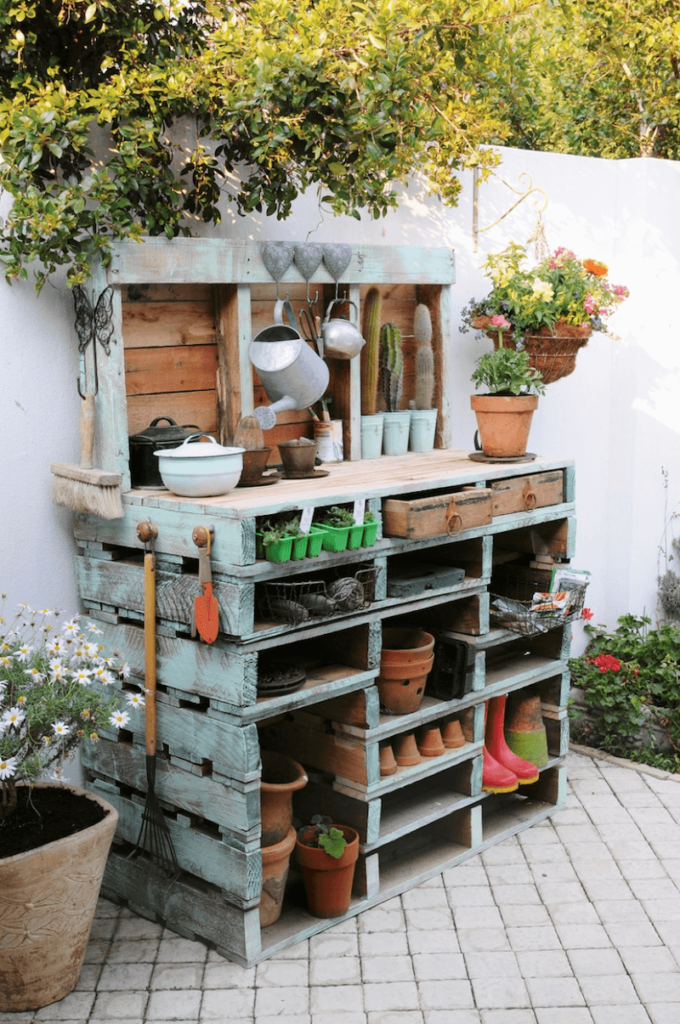
Building your own potting bench is a rewarding and fulfilling experience. It's a chance to unleash your creativity, personalize your gardening space, and create a beautiful and functional centerpiece for your outdoor oasis. By carefully planning your design, selecting the right materials, and following the steps outlined in this guide, you can build a potting bench that will serve you for years to come. So, embrace the DIY dream, get your hands dirty, and enjoy the process of transforming a simple idea into a stunning and functional addition to your garden. Remember to always prioritize safety and enjoy the satisfaction of creating something truly special with your own hands. The potting bench bliss awaits!
Potting Bench Bliss: DIY Dreams!
Creating a dedicated potting bench is more than just building a piece of furniture; it's about cultivating a space dedicated to your passion for gardening. It's a sanctuary where you can nurture your plants, organize your tools, and find joy in the process of nurturing life. This detailed guide will explore the world of DIY potting benches, covering everything from design inspiration and planning to construction and customization. Let's transform your gardening dreams into a beautiful and functional reality!
I. Dreaming of Your Perfect Potting Bench: Design Inspiration
Before you grab your tools, it's crucial to visualize your ideal potting bench. Consider these key aspects:
-
Size and Scale: How much space do you have available? A small balcony might only accommodate a compact bench, while a spacious backyard allows for a larger, more elaborate structure. Measure your area carefully to ensure a proper fit. Think about whether you need ample space for larger pots or if a smaller, more streamlined design will suffice.
-
Style and Aesthetics: Your potting bench should complement your existing garden and outdoor décor. Do you prefer a rustic, farmhouse style? A sleek, modern design? Or perhaps something more whimsical and charming? Browse online for inspiration – Pinterest and other visual platforms are treasure troves of ideas. Consider the materials – reclaimed wood can offer a rustic charm, while cedar or redwood offer natural durability and weather resistance.
-
Functionality and Features: Beyond the basic structure, think about the features you'd find most useful. Do you need shelves for storage? Drawers for small tools and seeds? A built-in sink for watering or cleaning? A raised work surface for comfortable potting? Incorporate these features into your design to maximize efficiency and comfort. Consider adding hooks for hanging tools, a built-in watering can holder, or even a small chalkboard to jot down planting notes.
-
Location, Location, Location: The placement of your potting bench is critical. Choose a spot that receives adequate sunlight (if needed by your plants), is easily accessible, and offers protection from harsh weather conditions. Consider proximity to water sources to make watering easier. Avoid placing it in low-lying areas prone to waterlogging.
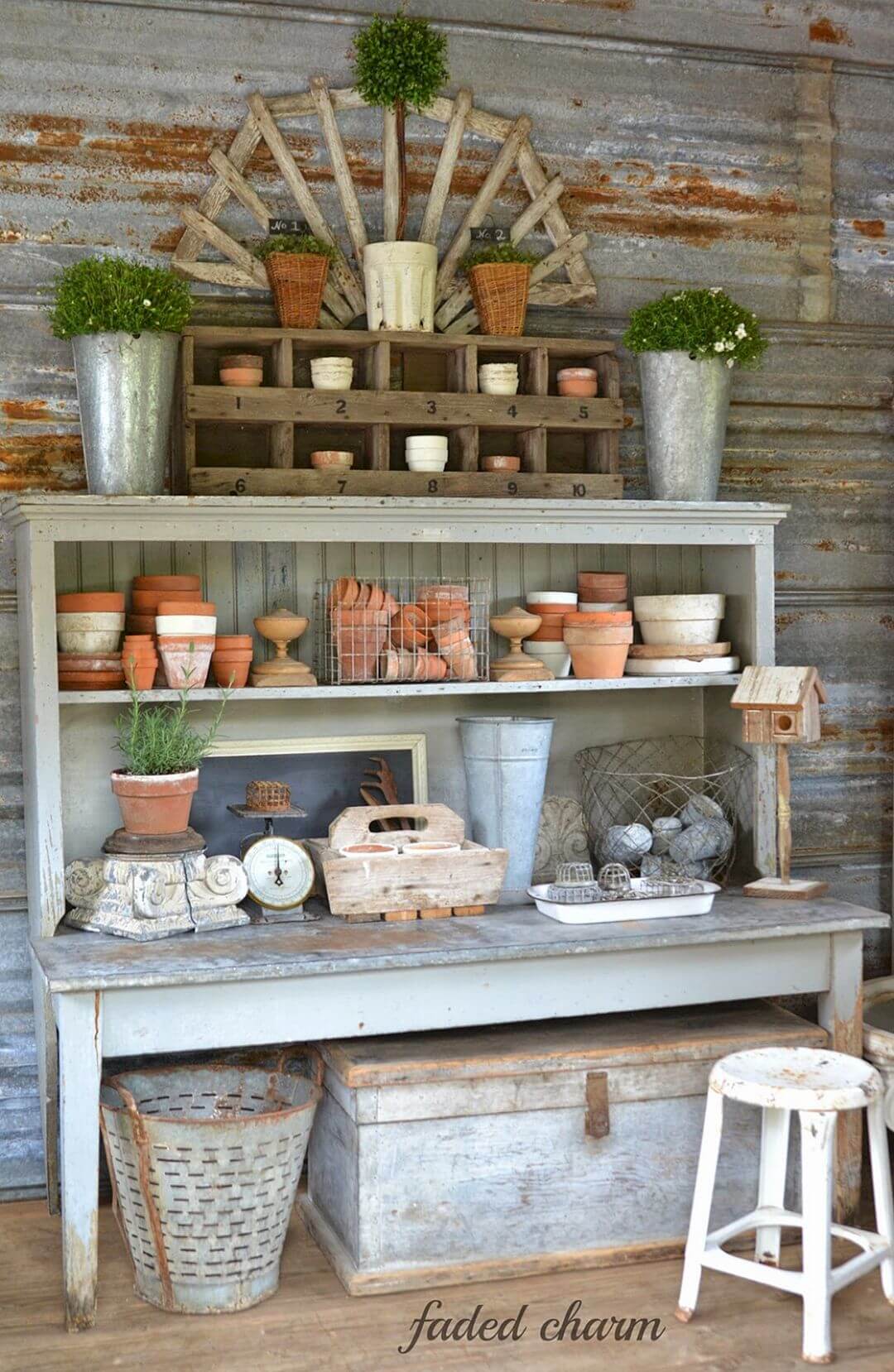
- Budget and Materials: Set a realistic budget before you begin. Prices for materials can vary widely depending on the type of wood, hardware, and other components you choose. Consider sourcing reclaimed or salvaged materials to reduce costs and contribute to sustainability. Factor in the cost of tools and any additional features you're planning to incorporate.
II. Planning Your Potting Bench: Detailed Steps
Once you have a clear vision of your ideal potting bench, it's time to translate that vision into a tangible plan. This phase involves detailed design and material selection.

-
Detailed Drawings and Sketches: Create detailed drawings or sketches of your potting bench, including dimensions, material specifications, and the placement of all features. This will serve as your blueprint during construction. Don't hesitate to revise your plans as needed.
-
Material Selection: Choose your materials carefully, considering durability, aesthetics, and budget. Pressure-treated lumber is an excellent choice for outdoor applications, offering resistance to rot and insects. Cedar and redwood are naturally resistant to decay and offer a beautiful aesthetic. Reclaimed wood adds character and sustainability. For countertops, consider concrete, granite, or even repurposed tiles for a unique touch.
-
Hardware Selection: Choose high-quality screws, bolts, hinges, and other hardware that are appropriate for outdoor use. Stainless steel or galvanized steel are excellent choices for their rust resistance.

-
Tool Checklist: Gather all the necessary tools before you start. This might include a measuring tape, saw (circular saw or hand saw), drill, screwdriver, level, sandpaper, safety glasses, work gloves, and clamps.
-
Cut List: Based on your drawings, create a detailed cut list that specifies the dimensions of each piece of lumber. This will help you avoid wasting materials and ensure you have everything you need.
III. Building Your Potting Bench: A Step-by-Step Guide

This section will provide a general guide to building a basic potting bench. Remember to always consult your specific plans and adjust the instructions accordingly.
Step 1: Constructing the Base:
- Cut the lumber for the base according to your cut list.
- Assemble the base frame using screws and appropriate joinery techniques (e.g., pocket holes, mortise and tenon).
- Ensure the frame is square and level.

Step 2: Attaching the Legs:
- Attach the legs to the base frame using screws or bolts.
- Use a level to ensure the legs are plumb and the bench is stable.
Step 3: Building the Work Surface:
- Cut the lumber for the work surface to the desired dimensions.
- Attach the work surface to the base frame, ensuring it is securely fastened and level. Consider adding a lip to prevent items from rolling off.
Step 4: Adding Shelves and Drawers (Optional):
- If your design includes shelves or drawers, construct these components separately.
- Attach them to the base frame using appropriate hardware.
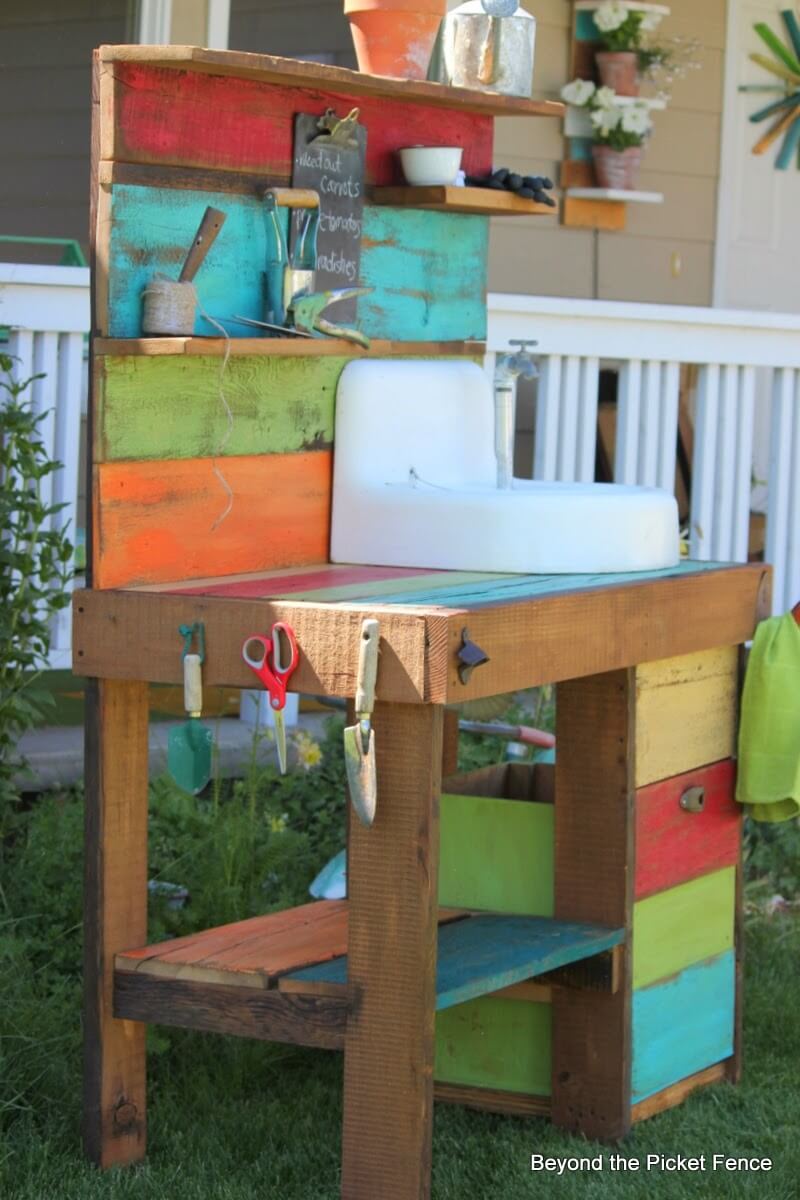
Step 5: Finishing Touches:
- Sand all surfaces smooth.
- Apply a weather-resistant sealant or paint to protect the wood from the elements.
- Add any final hardware or decorative elements.
IV. Customizing Your Potting Bench: Unique Ideas

Don't be afraid to personalize your potting bench to reflect your unique style and gardening needs. Here are some customization ideas:
- Built-in Sink: Integrate a small sink for convenient watering and cleaning.
- Hanging Tool Storage: Add hooks or a pegboard for hanging tools.
- Rolling Cart Integration: Attach a rolling cart for easy mobility.
- Vertical Gardening: Incorporate vertical gardening elements like trellises or hanging planters.
- Lighting: Add outdoor lighting for evening gardening sessions.
- Recycled Materials: Utilize reclaimed wood, repurposed containers, or other recycled materials to add character and sustainability.
V. Maintaining Your Potting Bench: Tips for Longevity
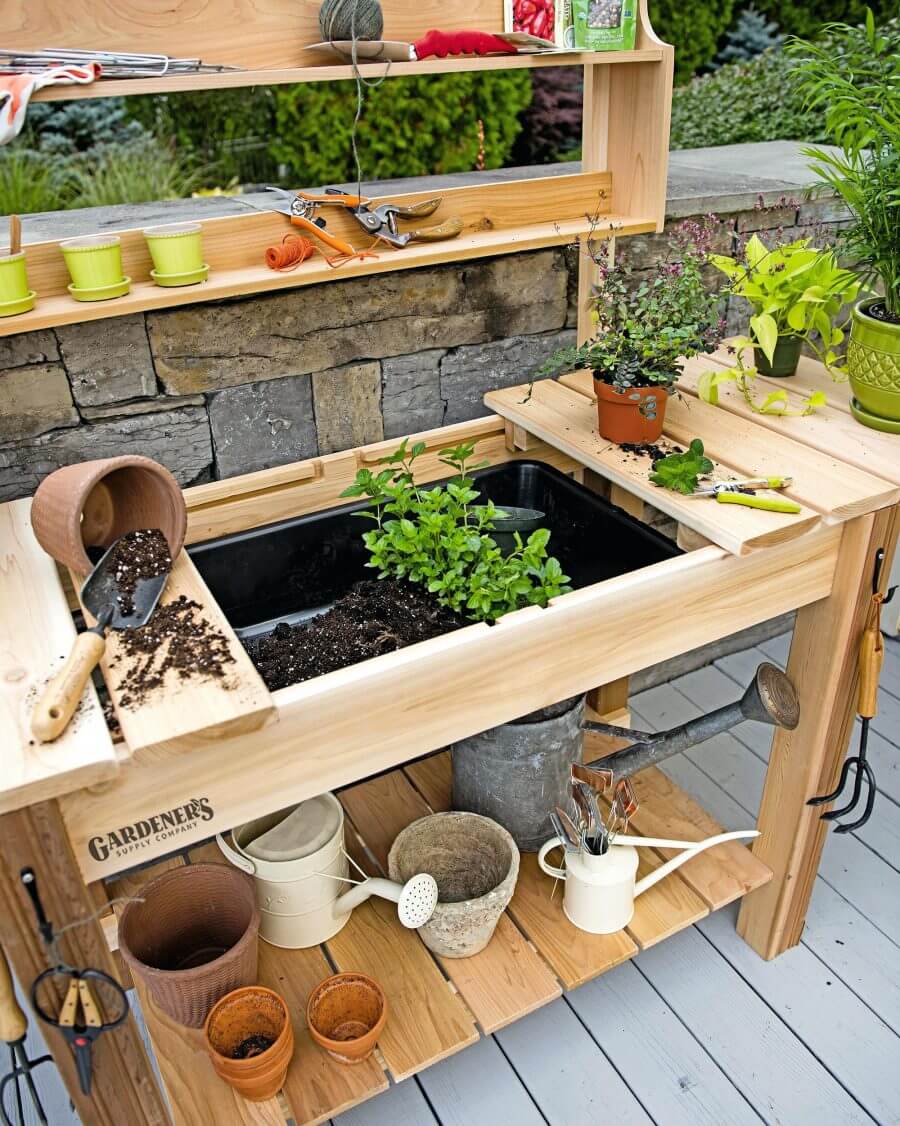
Proper maintenance will ensure your potting bench lasts for years to come.
- Regular Cleaning: Clean the bench regularly to remove dirt, debris, and plant matter.
- Weather Protection: Protect the bench from prolonged exposure to rain or harsh sunlight. Consider using a cover during inclement weather.
- Wood Treatment: Reapply sealant or paint as needed to maintain protection from the elements.
- Hardware Inspection: Periodically inspect the hardware and tighten any loose screws or bolts.
VI. Conclusion: Embrace the Potting Bench Bliss

Building your own DIY potting bench is a rewarding experience that combines creativity, craftsmanship, and a deep appreciation for the art of gardening. By following these steps and incorporating your personal touches, you can create a beautiful and functional space that enhances your gardening enjoyment for years to come. So, unleash your inner builder and embrace the potting bench bliss! Remember to prioritize safety and take your time throughout the process. The result will be a truly personalized and functional addition to your garden that you'll cherish for years to come.



